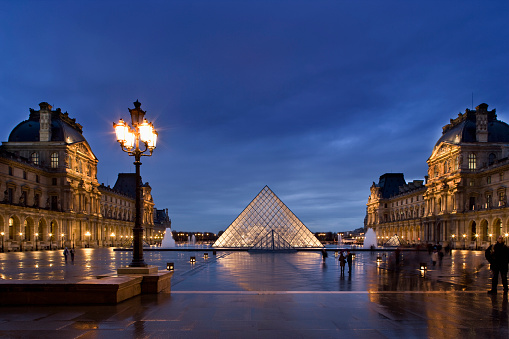When “Batman” was finally released on the big screens after more than three months of mandatory rental suspension, the only officially screened Moscow movie theater tickets sold out in a matter of hours. And what was a mundane plan for the evening before going to the movies has now turned into an event, and Robert Pattinson looked particularly good in IMAX resolution. Over the past 100 days, not only Matt Reeves’ Batman, but also other high-profile releases have not been shown in Russia: Fantastic Beasts: The Secrets of Dumbledore, Top Gun: Maverick, Doctor Strange: In the Multiverse of Madness, I blush”, “Morbius” and other movies canceled by Hollywood studios. Major companies including Disney, Warner Bros., Sony Pictures, and others made this decision in March, and while some predicted Torrents would return, others shifted their focus to cinema from other countries: Turkey (finally, we’ve gotten to this point. “Knock on my door” ” series), South Korea (not all the same “The Squid Game” to review) and Europe. By the way, cinemas for the first time announced the plight of the industry – the reruns of Russian blockbuster films did not save it, the premieres of the series on the big screen did not give the same result as a blockbuster with Tom Cruise or superhero fiction can provide with Benedict Cumberbatch. In the near future, Bollywood films, South Korean cinema, Latin American films should become another alternative to Hollywood films, and in the recently completed SPIEF, the Gazprom-Media holding and Iran also agreed on cooperation.
However, Pavel Ponikarovsky, owner of the regional cinema chain Lumen Film and member of the board of the Cinema Owners Association (AVK), does not have high hopes for such a decision and explains in a comment to Vedomosti: It’s almost impossible to make people pay to see it.” According to him, it takes months to familiarize the Russian audience with a fundamentally new film market, but a few decades ago, in Soviet times, for example, Indian films managed to attract millions of viewers. Overall, it’s worth watching at least one excerpt from any Indian movie to get a sense of what Bollywood is – yes, it’s a riot of colors, lots of song and dance, and sometimes ridiculous zooms into distinctive close-ups. Indian cinema from others. About two thousand films are shot here every year, making the local industry the most productive in the world, but projects rarely go beyond the borders of the country – mainly because they are all closely related to the national culture, often incomprehensible to the international audience. Bollywood relies on music, well-established patterns (like Turkish soap operas, the events here are often very stereotypical), costumes, lots of flowers, and does not reject the hackneyed script, although it often loses. Will the Russian audience get used to it? And about. Historian Stanislav Dedinsky, editor-in-chief of Art of Cinema magazine, replies: “The sauce is how to sell it, with what sauce to serve it. Indian films are generally not worse in production than Western films, but whether they can compete with American films on equal terms if they stay at the box office is another big question,” he told News.ru in an interview.
But unlike Bollywood, South Korea is now much more likely to conquer Russian cinemas. Thanks to the huge success of The Squid Game (one of Netflix’s most popular series) and Parasite’s Oscar two years ago, the Asian industry is experiencing its best times: Netflix spends huge sums on Asian shows, Academy chains South Korea. The directors get all the attention for the movies (Lee Isaac Cheung was nominated for “Minari” in 2021) and audiences literally go crazy for them. As Stanislav Dedinsky rightly noted, Asian films were in the repertoire of cinemas and were almost always on the air, but could be lost in the background of the next Marvel premiere. How many fans are in the audience, for example “Oldboy” or “Train to Busan”? Unlike Hollywood, Korean cinema was formed late and is distinguished by blurring of genre boundaries (the same “Parasite” is simultaneously a thriller, a detective story and an acute social drama), verified shots (Koreans are still aesthetic) and an unforgettable visual style. South Korean culture is fundamentally picky about details, so on stage, BTS is in perfect harmony and millions of viewers watch hundreds of identical green costumes on screen in “The Squid Game.” In general, South Korean cinema is more familiar to our viewers than any other – the main themes here are social inequality, and the actors often overdo it (this is typical for the local industry), so that the emotions are read without any problems. And if you give the Asian industry unlimited power in Russia, they are unlikely to miss such a market.
Iran will not stand aside either: at the SPIEF in June, the country agreed to co-production with Russia and announced the first ever unnamed project. About Iranian cinema, it is worth knowing that for years it has lived under more than one ban, so its themes are appropriate – freedom, politics, censorship, fate, religion, restrictions. For the same reason, a lot of meaning is given to landscapes, interior details, music in Iranian movies – things that are not the most obvious in movies and make them very metaphorical. Over the past decades, Iran has also hit festival cinema – for example, Jafar Panahi entered the international arena, followed by Asghar Farhadi, who won two Oscars for The Salesman (2017) and Nader and Simin’s Divorce (2012). At the same time, the domestic film market of the country is full of light genres (comedies and melodramas), and American films are officially despised by the state, but not completely erased from the repertoire of cinemas. Overall, over the last few years, Iranian cinema has become one of the most important films in the world with minimal special effects and multi-million dollar budgets, yet retained its originality. Another question is whether it will resonate with the Russian audience?
Source: People Talk





